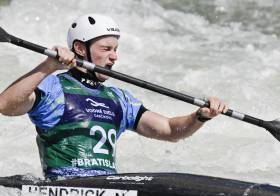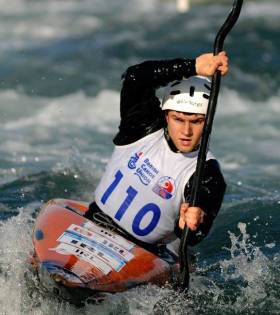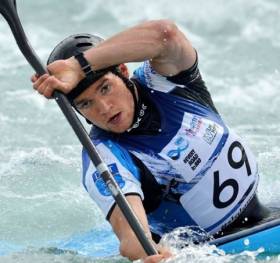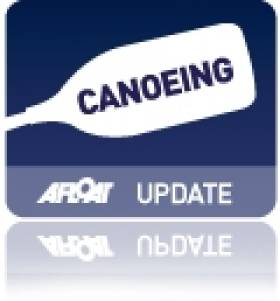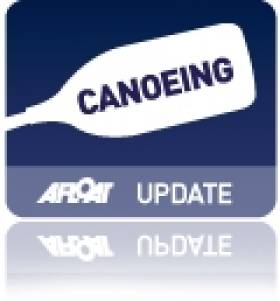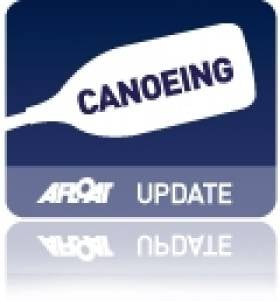Displaying items by tag: Hendrick
McClure and Hendrick Best of Irish in Spain and Slovakia
#Canoeing: David McClure finished fifth in the final of the K1 Surface event at the canoe freestyle World Championships in Sort in Spain. At the canoe slalom European Under-23 Championships, Noel Hendrick reached the semi-finals and finished 26th in Liptovsky Mikulas in Slovakia. The Irishman had touches on gates three and 17, incurring four seconds in penalties.
Curtis Left To Rue Close Call at World Championships
#Canoeing: Sam Curtis was left to rue his close miss in the first run of the under-23 K1 at the canoe slalom World Championships in Krakow in Poland. The Irishman had to wait around for a protracted period as a technical issue was sorted out in the middle of the second run, and he did not do well. He touched five gates and missed one – gate 11. He was well outside the qualifying mark for the semi-finals. Noel Hendrick and Eoin Teague also missed out.
Canoe Slalom World Championships, Under-23 and Junior, Krakow, Poland (Irish interest; selected results)
Men
Under-23 K1 (racing kayak) – First Run (Top 30 Qualify): 35 S Curtis 86.08; 69 E Teague 137.71; 70 N Hendrick 138.45. Second Run (10 Qualify): 22 Hendrick 94.34; 35 Teague 137.21; 38 Curtis 144.47.
Junior K1 – First Run (30 Qualify): 50 S Ansell 110.33; 63 C McLarnon 150.29; 74 C Vaugh 214.05. Second Run: 28 Ansell 109.79; 38 Vaugh 148.67; 44 McLarnon 185.63.
Women
Under-23 K1 – First Run (15 Qualify): 30 C O’Ferrall 156.80. Second Run (5 Qualify): 23 O’Ferrall 251.16.
Curtis So Close on First Run at World Championships
#Canoeing: Under-23 competitor Sam Curtis came frustratingly close to direct qualification on his first run at the canoe slalom World Championships in Krakow, Poland, this morning. The Irish paddler, competing in a K1, completed the course in 84.08 seconds, but he touched the second last gate and was given a two-second penalty. It pushed him above the direct qualification mark. Eoin Teague set a time of of 89.71, including four seconds in penalties for touches on gates two and 14. However, he dropped out of contention in this run when he was retrospectively ajudged to have missed gate two and given a 50-second penalty. Noel Hendrick was also down the rankings. He was penalised 50 seconds for missing gate 13.
Canoe Slalom World Championships, Under-23 and Junior, Krakow, Poland (Irish interest; selected results)
Men
Under-23 K1 (racing kayak) – First Run (Top 30 Qualify): 35 S Curtis 86.08; 69 E Teague 137.71; 70 N Hendrick 138.45.
#Canoeing: Liam Jegou topped the rankings in his first run and qualified directly for the semi-finals at the canoe slalom under-23 World Championships in Krakow in Poland. The Ireland C1 competitor had a fault-free round in 83.55 seconds. Ireland’s two other contenders in this class fell outside the qualificaton mark: Robert Hendrick missed gate 10 and incurred a 50-second penalty in an otherwise steady run. Jake Cochrane touched gates 12 and 14 and then missed gates 17 and 18, to finish 60th. Hendrick finished 15th in his second run and Cochrane 27th.
Canoe Slalom World Championships, Under-23 and Junior, Krakow, Poland (Irish interest; selected results):
Men
Under-23 C1 – First Run (20 qualify directly for semi-finals): 1 Ireland (L Jegou) 83.55 seconds; 54 R Hendrick 141.89; 60 J Cochrane 200.64. Second Run (10 qualify): 15 Hendrick 94.87; 27 Cochrane 100.74.
Junior C1 – First Run (20 qualify): 41 Ireland (E Moorhouse) 120.92; 49 F McNally 164.94. Second Run: 20 McNally 113.71; 34 Moorhouse 162.06.
Hendrick Twins Place Fourth in World in Brazil
#CANOEING: Noel and Robert Hendrick narrowly missed a podium finish at the Junior and Under-23 Canoe Slalom World Championships in Brazil. The twin brothers, competing in a Junior C2 (Canadian canoe), finished fourth behind French, Czech and German pairings. The Hendricks compete for Ribbontail Canoe Club in Enfield in County Meath. Three Ireland competitors exited at the semi-final stage: Jake Cochrane (C1, Under-23), Aisling Conlan (K1, Under-23) and Robert Hendrick (C1 Junior). The Hendrick brothers are set to compete at the European Junior and Under-23 Canoe Slalom Championships in Poland next August.
ICF Canoe Slalom Junior and Under-23 World Championships, Foz do Iguassu, Brazil (Selected Results) – C2 Men, Junior: 1 France 104.25 seconds, 2 Czech Republic 101.64, 3 Germany 105.55; 4 Ireland (N Hendrick, R Hendrick) 109.91.
Hendrick (16) Given Taste of World Championship Fare
#CANOEING: Robert Hendrick finished 46th in his heat at the Canoe Slalom World Championships in Deep Creek in the United States today. The top 30 qualified for the semi-finals. The 16-year-old C1 (Canadian canoe) paddler had two touches on his first run and four on his second. Alexander Slafkovsky of Slovakia qualified in top position.
Canoe Slalom World Championships, Deep Creek, Maryland, United States (Selected Results, Irish interest)
Men
C1 Heats (Top 30 qualify for the semi-finals): 46 R Hendrick 134.24.
K1 Heats (Top 40 qualify for semi-finals): 53 S Curtis 114.54; 60 P Hynes 124.61.
.
Canoeist Hendrick Takes Silver for Ireland at Youth Olympic Games
#CANOEING: Ireland’s Robert Hendrick took a silver medal in the C1 Obstacle Slalom at the Youth Olympic Games in Nanjing in China. The event is run on a head-to-head format and the 16-year-old took on and beat Leon Breznik of Slovenia in the semi-finals. In the final, Hendrick lost out to France’s Lucas Roisin, who won gold. Hendrick is coached by three-time Ireland Olympian canoeist Eoin Rheinisch.
Youth Olympic Games, Nanjing, China (Irish interest)
Canoeing: C1 Obstacle Slalom – Semi-Final: 1 Ireland (R Hendrick) 1:18.752, 2 Slovenia (L Briznik) 1:25.750.
Final: 1 France (L Roisin) 1:18.179, 2 Ireland (R Hendrick) 1:19.047.
No Quarter-Final for Irish Canoeist at Youth Olympic Games
# CANOEING: Ireland canoeist Robert Hendrick finished 12th of the 14 who competed in the Last 16 round and did not qualify for the quarter-finals of the C1 junior men’s head to head sprint at the Youth Olympic Games in Nanjing in China. Hendrick had also finished 12th in the heats.
Youth Olympic Games, Nanjing, China (Irish interest)
Canoeing: C1 Men’s Head to Head Sprint – Heat (all qualify for next phase): 1 Moldova 1:43.18; 12 Ireland (R Hendrick) 2:14.219. Last 16 (Eight Qualify for Quarter-Final): 1 Moldava 1:45.803; 12 Ireland 2:14.706.



























